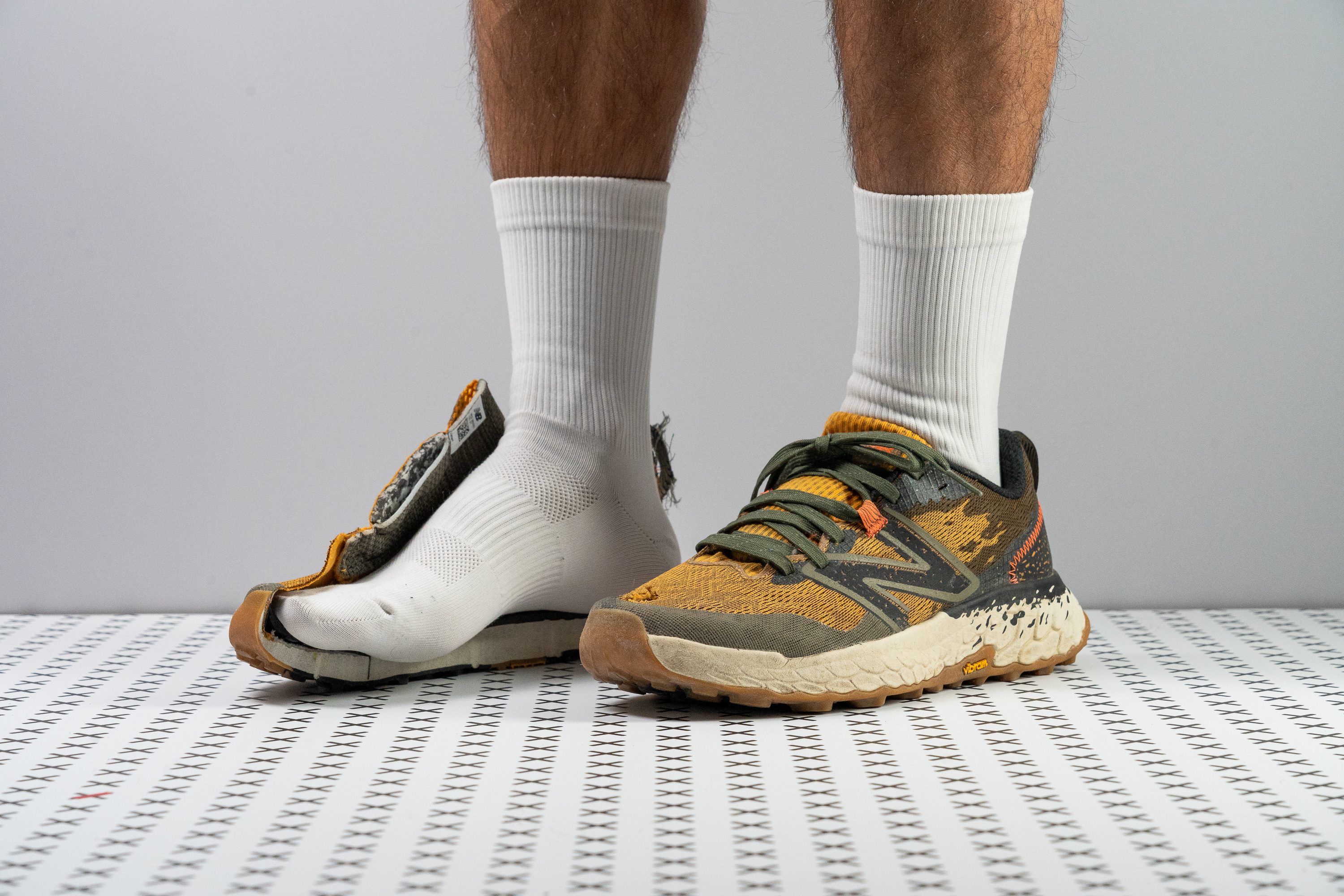Our verdict
Pros
- Grippier than ever before
- Ready for a rough beating
- Lighter than ever
- Seamless heel-to-toe
- Stable during sharp turns
- Buttery soft
- Welcomes wide feet
- Tongue stays in place
- Also for hiking!
Cons
- Not enough airflow
- Forefoot lacks cushion
Audience verdict
Comparison
The most similar running shoes compared
+ + Add a shoe | |||||
|---|---|---|---|---|---|
| Audience score | 86 Good! | 84 Good! | 89 Great! | 86 Good! | |
| Price | $140 | $155 | $150 | $150 | |
| Trail terrain | LightModerate | Light | Light | LightModerate | |
| Shock absorption | - | High | High | Moderate | |
| Energy return | - | Moderate | Moderate | Moderate | |
| Arch support | Neutral | Neutral | Neutral | Neutral | |
| Weight lab Weight brand | 10.5 oz / 297g 10.5 oz / 297g | 10.9 oz / 309g 10.5 oz / 297g | 10.1 oz / 286g 10.1 oz / 286g | 10.1 oz / 286g 9.2 oz / 260g | |
| Drop lab Drop brand | 9.9 mm 8.0 mm | 4.2 mm 4.0 mm | 9.6 mm 9.5 mm | 7.2 mm 6.0 mm | |
| Strike pattern | HeelMid/forefoot | Mid/forefoot | HeelMid/forefoot | Mid/forefoot | |
| Size | True to size | Half size small | True to size | True to size | |
| Midsole softness | Soft | Soft | Soft | Soft | |
| Difference in midsole softness in cold | Big | Small | Normal | Big | |
| Toebox durability | - | Good | Very good | Bad | |
| Heel padding durability | - | Good | Good | - | |
| Outsole durability | - | Good | Good | - | |
| Breathability | Moderate | Moderate | Warm | Moderate | |
| Width / fit | Narrow | Medium | Medium | Narrow | |
| Toebox width | Wide | Medium | Medium | Narrow | |
| Stiffness | Moderate | Stiff | Moderate | Moderate | |
| Torsional rigidity | Flexible | Stiff | Moderate | Flexible | |
| Heel counter stiffness | Flexible | Moderate | Stiff | Moderate | |
| Lug depth | 3.0 mm | 3.3 mm | 3.2 mm | 2.8 mm | |
| Heel stack lab Heel stack brand | 32.4 mm 29.0 mm | 37.3 mm 33.0 mm | 34.6 mm 37.0 mm | 30.6 mm 32.0 mm | |
| Forefoot lab Forefoot brand | 22.5 mm 21.0 mm | 33.1 mm 29.0 mm | 25.0 mm 27.5 mm | 23.4 mm 26.0 mm | |
| Widths available | NormalWideX-Wide | NormalWideX-Wide | NormalWideX-Wide | Normal | |
| Season | All seasons | All seasons | All seasons | All seasons | |
| Removable insole | ✓ | ✓ | ✓ | ✗ | |
| Orthotic friendly | ✓ | ✓ | ✓ | ✗ | |
| Ranking | #372 Bottom 43% | #232 Bottom 37% | #87 Top 24% | #177 Top 48% | |
| Popularity | #209 Top 32% | #24 Top 7% | #54 Top 15% | #208 Bottom 43% |
Size and fit
Size
New Balance Fresh Foam X Hierro v7 fits true to size (98 votes).
Who should buy the New Balance Fresh Foam Hierro v7
We think that the seventh edition of the New Balance Fresh Foam Hierro is the perfect pick for:
- trail runners who want an equally grippy and durable option
- long-distance runners who want a way-lighter version of the NB Hierro v6

Who should NOT buy it
If you crave more cushion, especially in the forefoot, for a comfier feel, the Altra Olympus 5 is a more suitable pick than the NB Hierro v7. And if it's a summer-ready shoe you're after, we are of the opinion that the Salomon Ultra Glide 2 is a cool option—literally and figuratively.
NB Hierro v7 vs. v6
- The most important change: weight! There is a massive weight drop, going from 323 grams/11.4 ounces to 297 grams/10.5 ounces in US men's 9.
- The shoe offers a comfier ride with its new Fresh Foam X midsole.
- Amplifying grip, the shoe's Vibram outsole has an updated lug pattern for a more technical-ready bite.
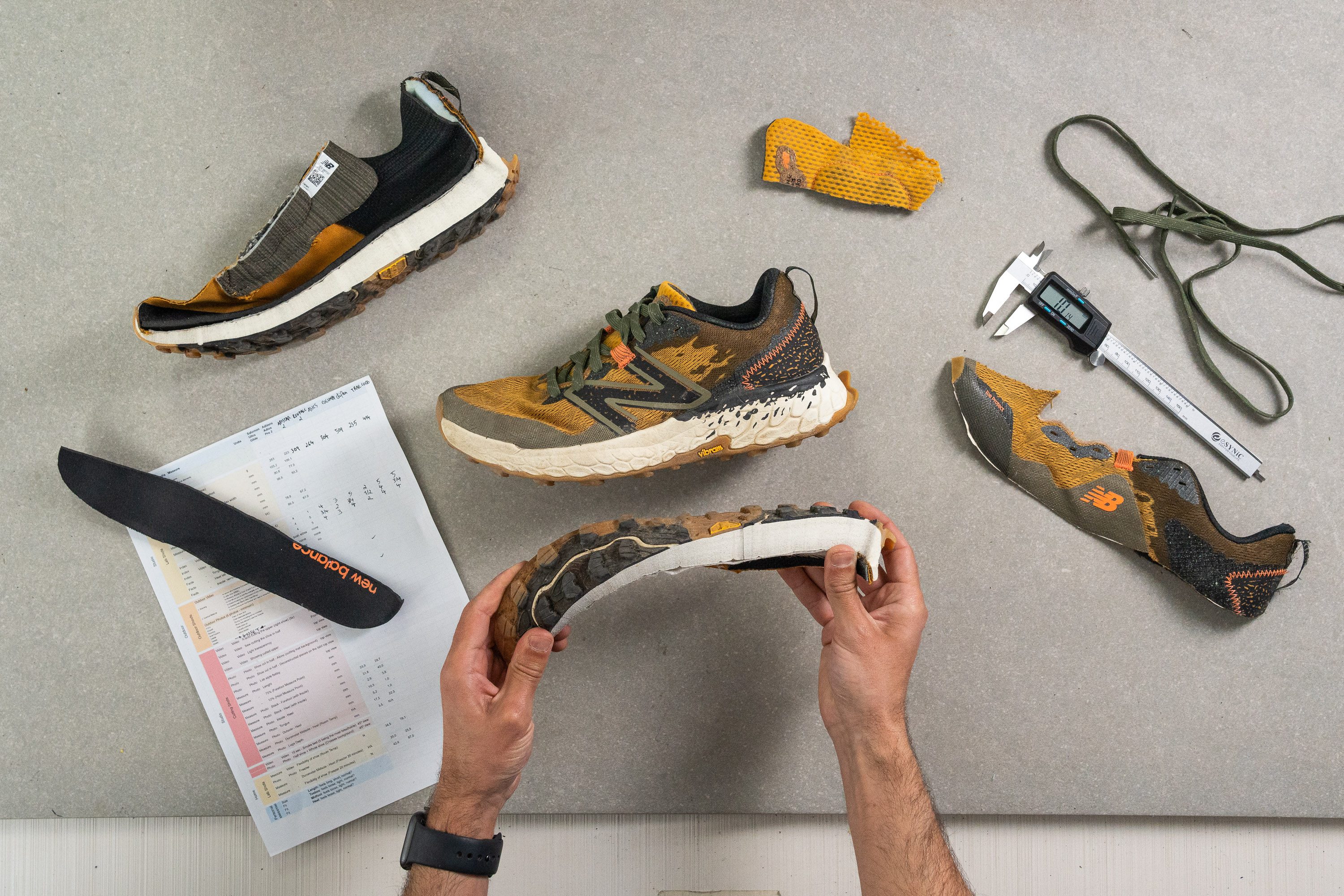
A really comfortable upper but can't take the heat
The Hierro 7's upper is exceptionally comfortable with a luxurious step-in feel.
But unfortunately, in exchange for the shoe's comfort, its breathability has been compromised. We found it to be too warm a shoe for the summer months.
Our breathability test delivered a rating of 3/5, which is slightly below average. It's important to note that trail running shoes typically have more interior padding compared to their road counterparts, and this shoe is no exception.
As you can see in the video above, there is considerable padding inside the upper. This prevented us from giving the shoe a higher breathability score to this shoe.
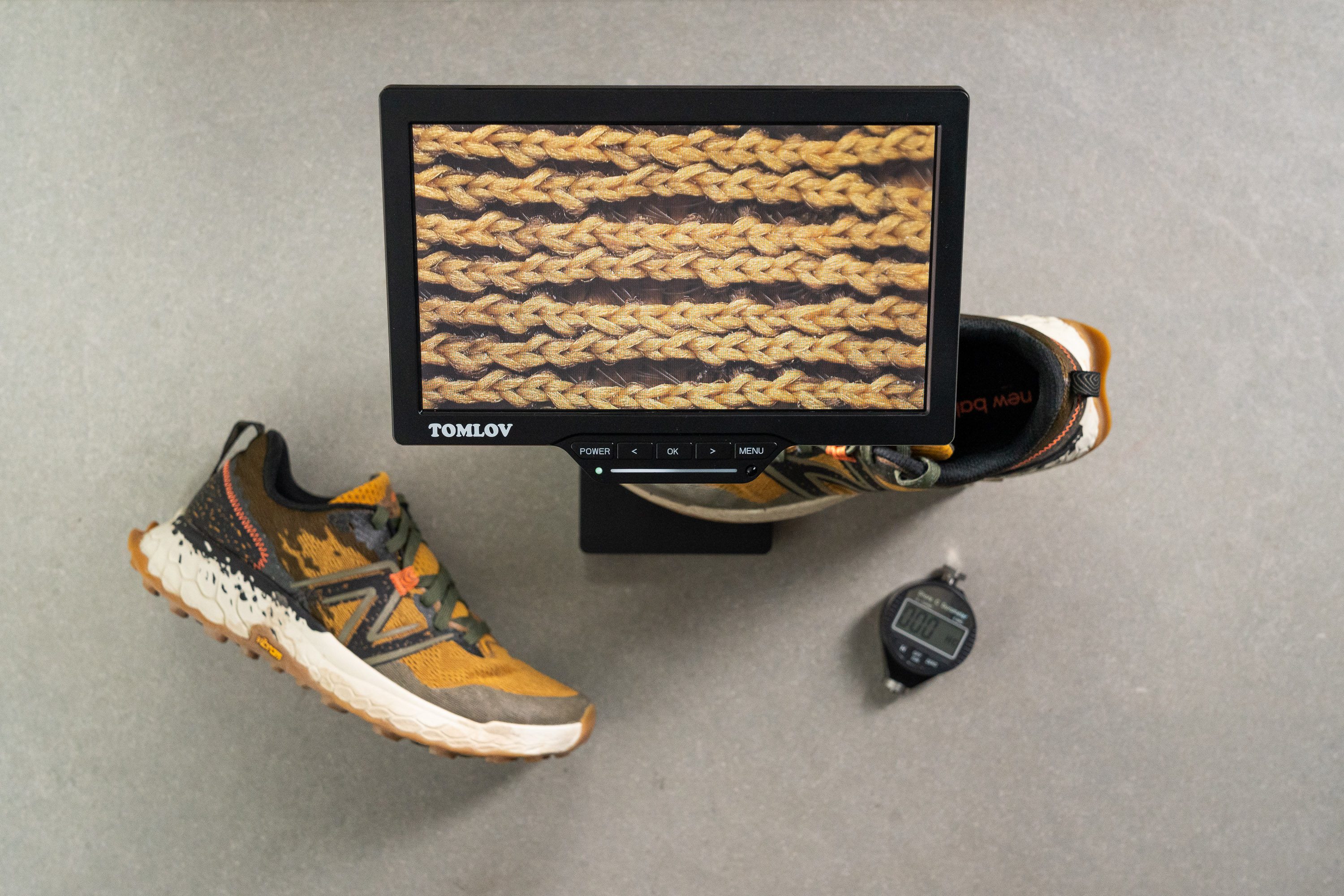
And if it wasn't for the ventilation strips that we observed under the microscope, we're sure that the shoe would have almost zero airflow.

New Balance made every effort to ensure maximum comfort in this trail kick. As expected, the light test confirmed our expectations, revealing minimal light penetration through its multiple layers.
Opens up to broad-footed runners
This is because the toe box is very roomy. No toe cramping or, God forbid, black toenails, are to be found here.
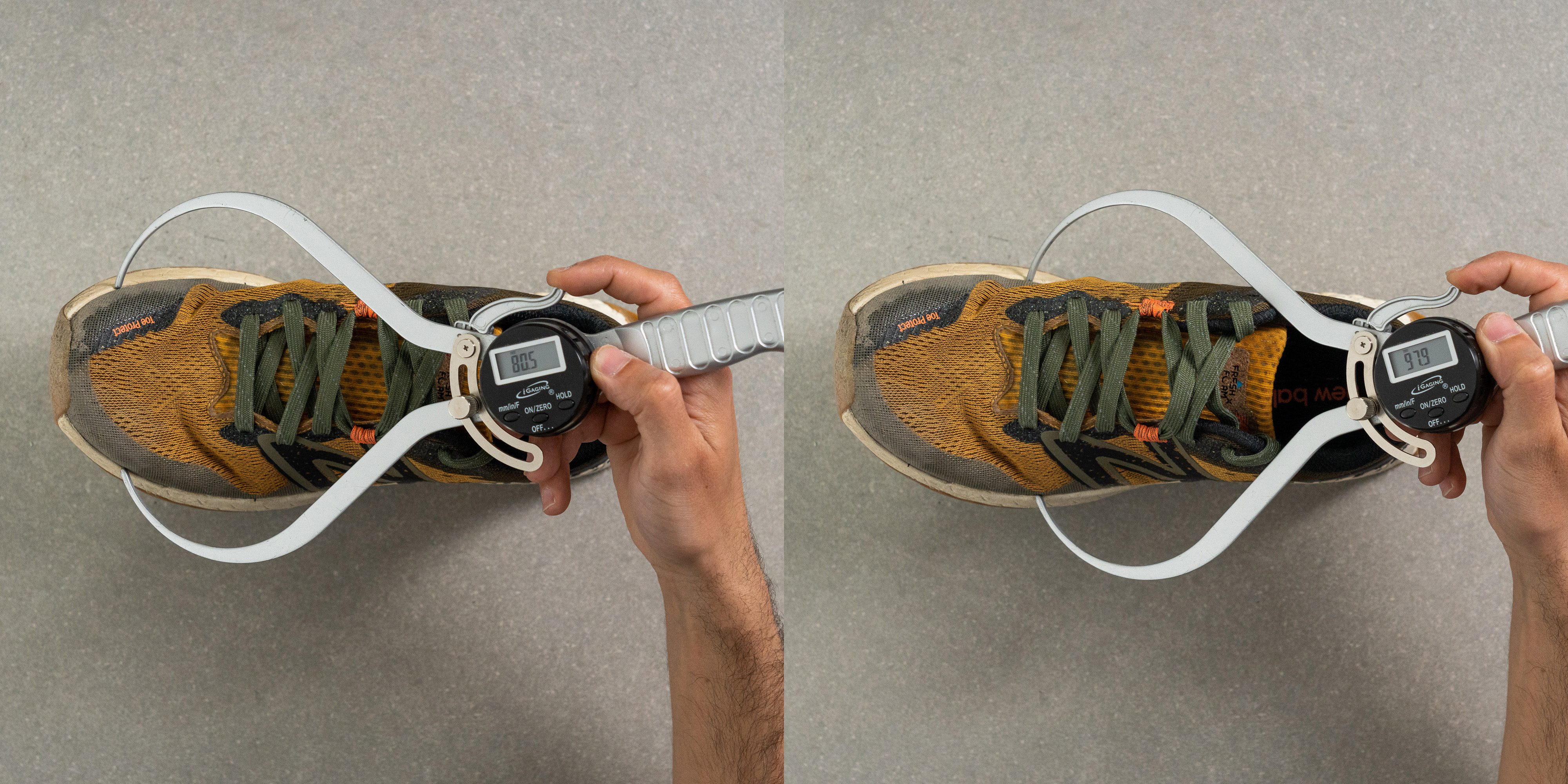
With a width of 97.9 mm at its widest point and 80.5 mm in the big toe area, the shoe only tapers by 21.6%, making it the most forgiving shoe—including road shoes—in this aspect that we've ever measured in our lab.

Finding shoes that accommodate Celtic, German, or Roman feet can be challenging. However, the Hierro v7 addresses this issue effectively, thanks to its unique toebox shape.
Loving the ride is easy with Fresh Foam X
Why? Because of two things: (1) the NB Hierro v7 is super soft and smooth and (2) it's stable as hell.
What makes the Hierro v7 truly magical is of course the Fresh Foam X cushioning. In our lab testing, it emerged as THE SOFTEST trail shoe foam we've ever measured! And it's a jaw-dropping 54% softer compared to its predecessor.
The Hierro v7 also features a subtle rockered shape that provides some forward momentum, especially for heel strikers.
Going from one step to the next is easy in this shoe. Even more, it provides surefooted steps even on technical trails. And when cornering? Stable as ever!
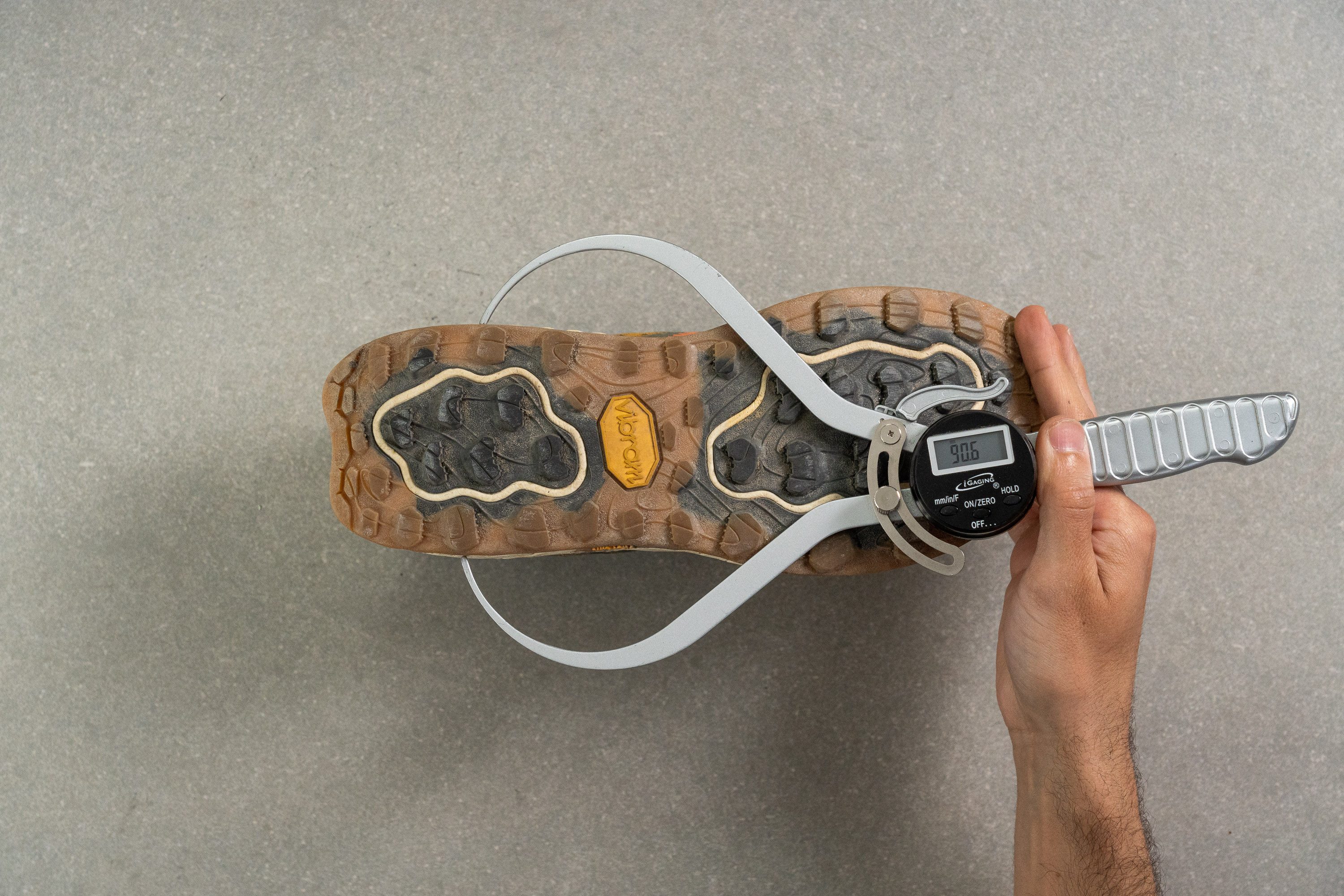
This is achieved through the tried-and-true Hierro formula, featuring a landing platform that is wider than the average.
It ensures secure and confident steps, no matter the surface or gradient.
In our measurements of the sole, we found a forefoot width of 113.0 mm and a heel width of 90.6 mm. This is a couple of millimeters wider than the average parameters of trail shoes.

The forefoot could use a bit more cushion
This New Balance shoe surely favors heel strikers more because the balls of our feet didn't receive as much love as the heels did.
New Balance claims that this shoe has 21 mm of foam in the forefoot, and 29 mm in the heel—for an 8-mm heel-to-toe drop.
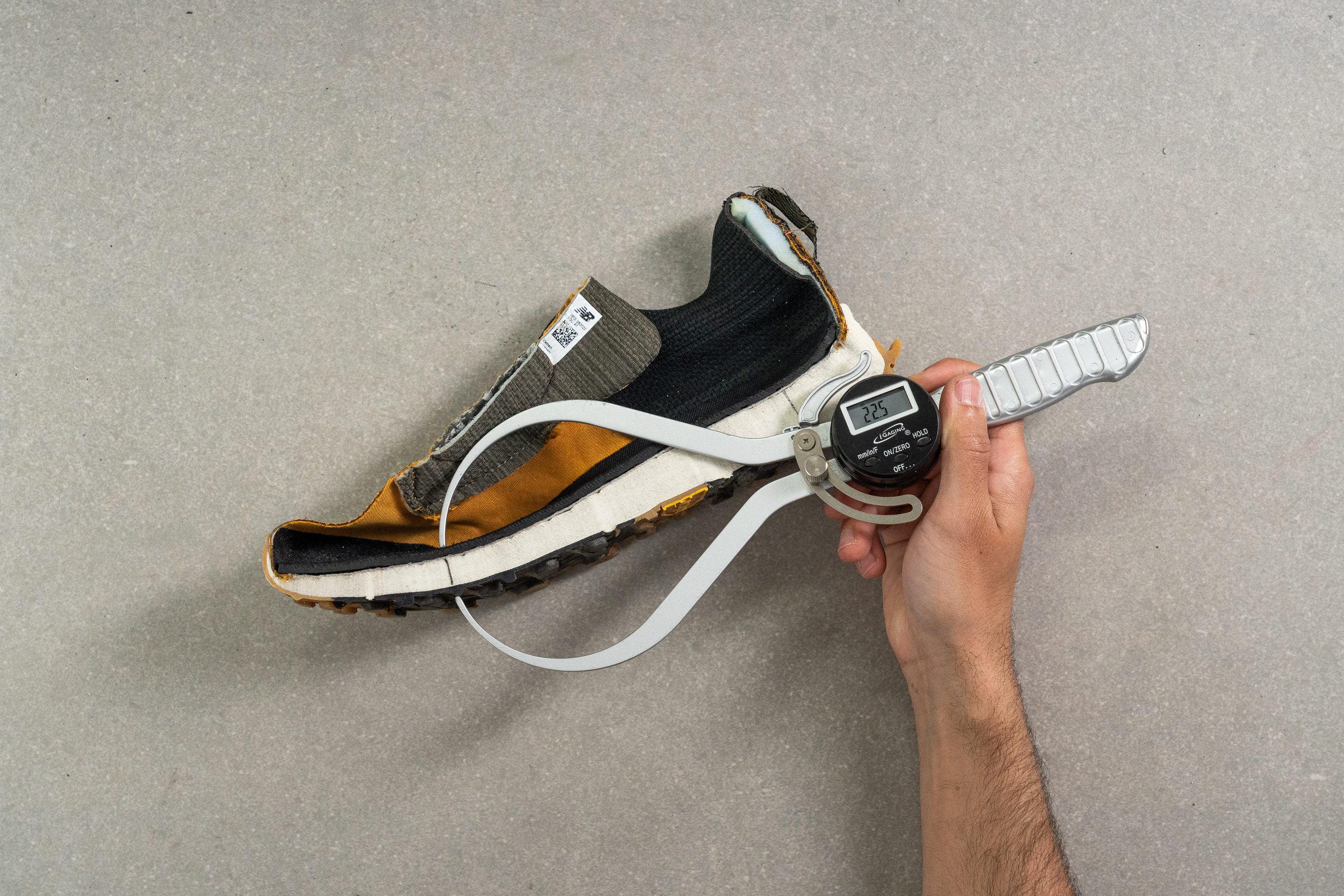
After conducting our precise measurements, we were pleasantly surprised to find more stack than expected—32.4/22.5 mm—resulting in a maybe-too-steep 9.9 mm drop.
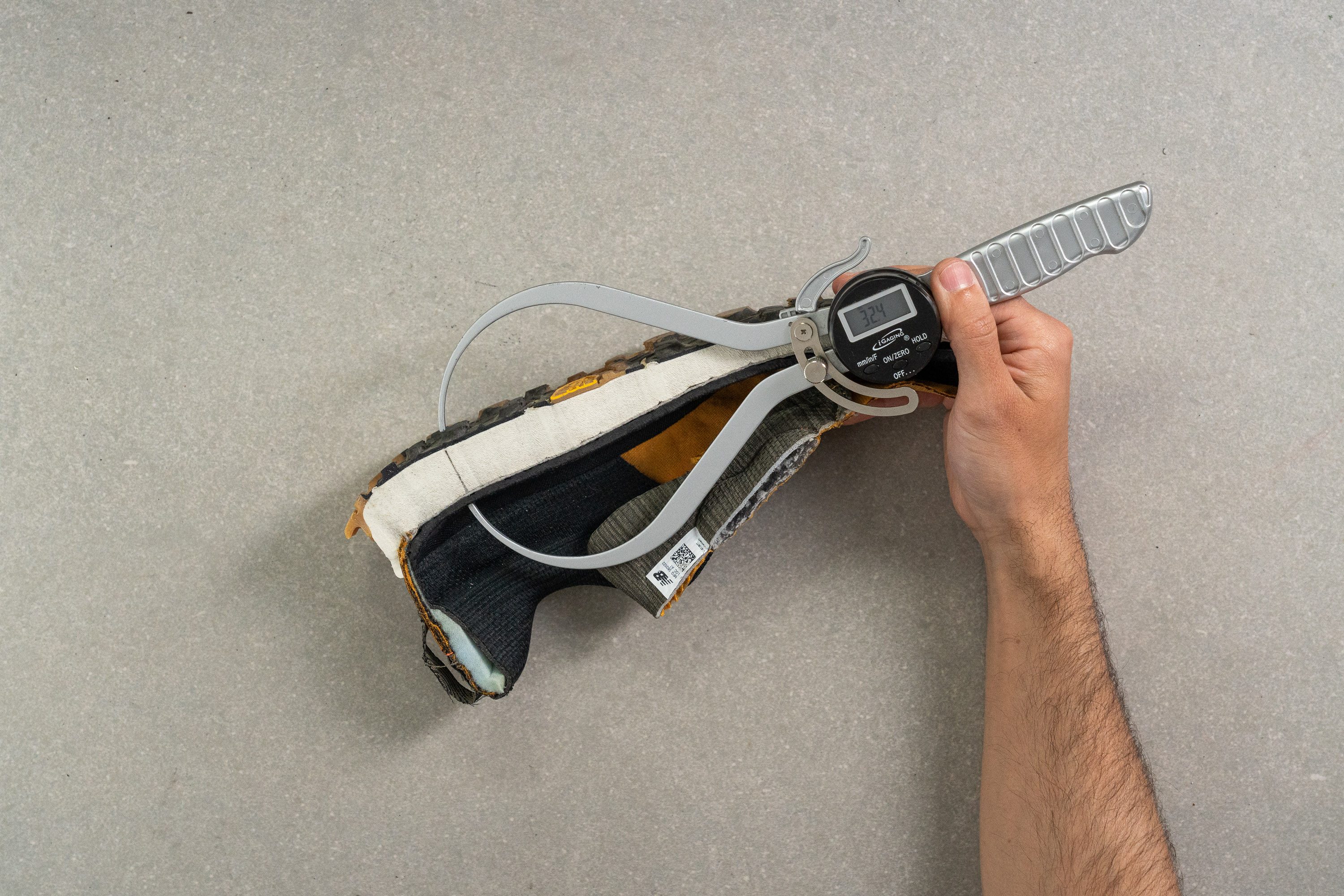
Although it boasts slightly more foam than anticipated, the 22.5-mm stack of Fresh Foam X falls short of making it an exceptional shoe for forefoot strikers. We would have preferred a 6-mm heel-to-toe drop that would've implied additional cushioning in the forefoot.
However, for midfoot-to-heel strikers, this shoe appears to be a solid choice, particularly if you struggle with Achilles issues—the higher drop can help alleviate pain in that area.
Flex and fly
One common complaint about the previous version of the Hierro was its stiffness, especially before it was broken in. The Hierro v7, on the other hand, offers a flexible ride right from the first step. That's a better deal.
To assess the shoe's flexibility, we conducted a series of tests. Our manual assessment resulted in a rating of 1 out of 5 for longitudinal flexibility and 2 out of 5 for torsional flexibility. This makes it one of the most flexible trail shoes we have ever tested.
Next, we conducted our classic 90º bending test. This NB shoe required a mere 16.6 N of force to achieve a 90-degree bend. To put it in perspective, the Hierro v6 resisted 19.0 N of force, while the Salomon Sense Ride 5, which is not renowned as a rigid shoe, required an almost double 30.2 N.
Our concerns, however, were focused on the freezer test. After being chilled inside for 20 minutes, the Hierro's 7th edition displayed a subpar 42.6% increase in firmness and a 47.6% increase in stiffness.
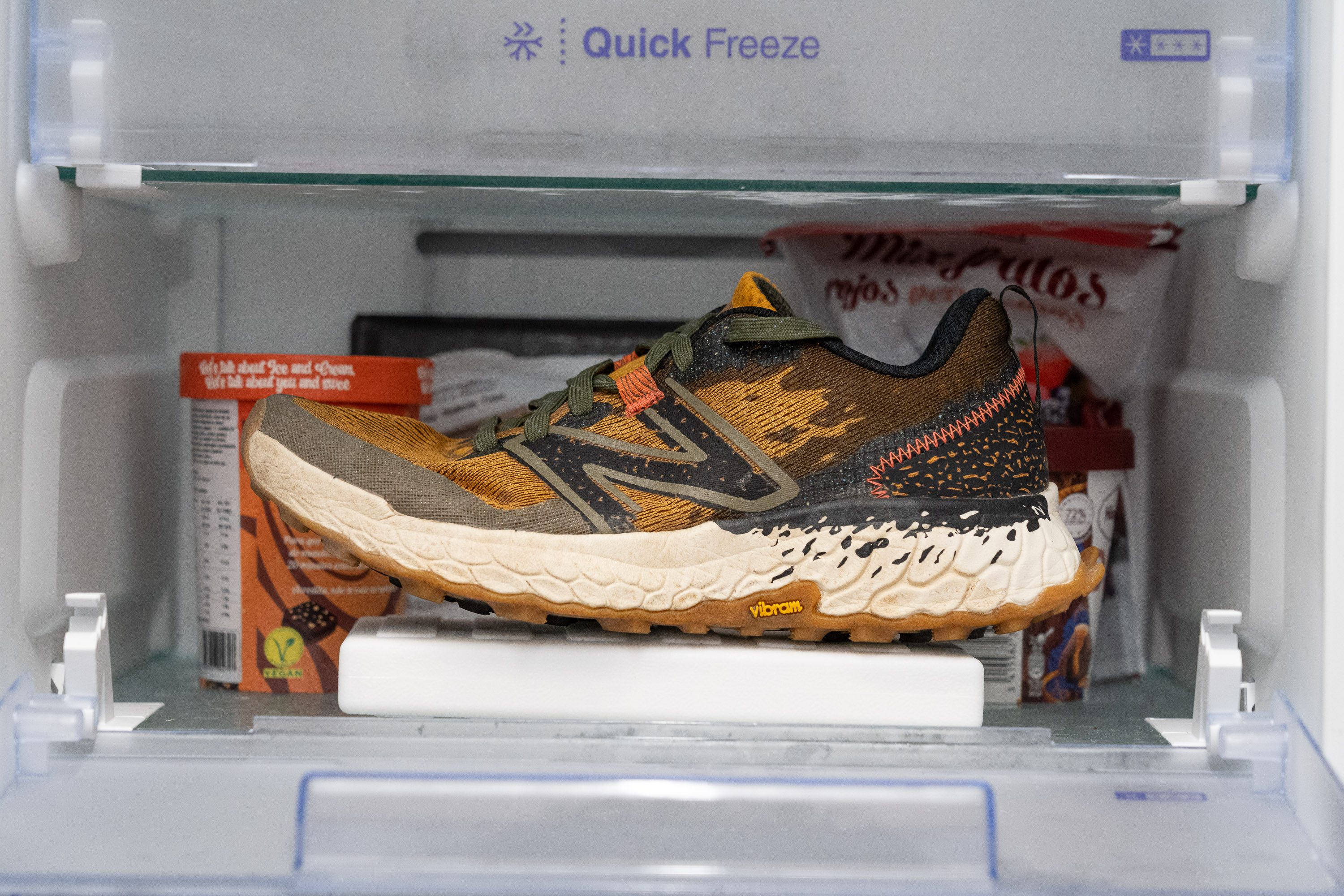
Although these results fall below the average performance, it is not a major issue considering how soft and flexible it is under normal circumstances.
It's obvious that if you plan to use it in cold temperatures, the shoe will still be soft, but the deviation from its normal state will be noticeable.
Sucks onto the pavement and it's really durable
The Hierro v7's grip felt very trustworthy out there on the trail.

The v7 model preserves the dependable and high-traction Vibram MegaGrip outsole, albeit with a revised lug pattern compared to its v6 counterpart.
This modification brings great news for tackling even the most demanding terrains, such as the rugged trails found on Hierro Island in the Canary Islands—yes, the shoe is named after this jaw-dropping location in Spain.
From both dry and wet trails to the really messy and gnarly terrain, the NB Fresh Foam Hierro v7 clings to the ground.
And this is indeed impressive given that the shoe's lugs are only 3 mm deep!

After all, the New Balance Hierro v7 is marketed as a road-to-trail option. This is good news for almost everyone, as it enhances agility on various surfaces, including roads.
The Hierro v7's weight crushes it!
The Hierro's weight loss journey is very apparent. It has evolved from being "a lot of shoe" underfoot to a nimble horse!
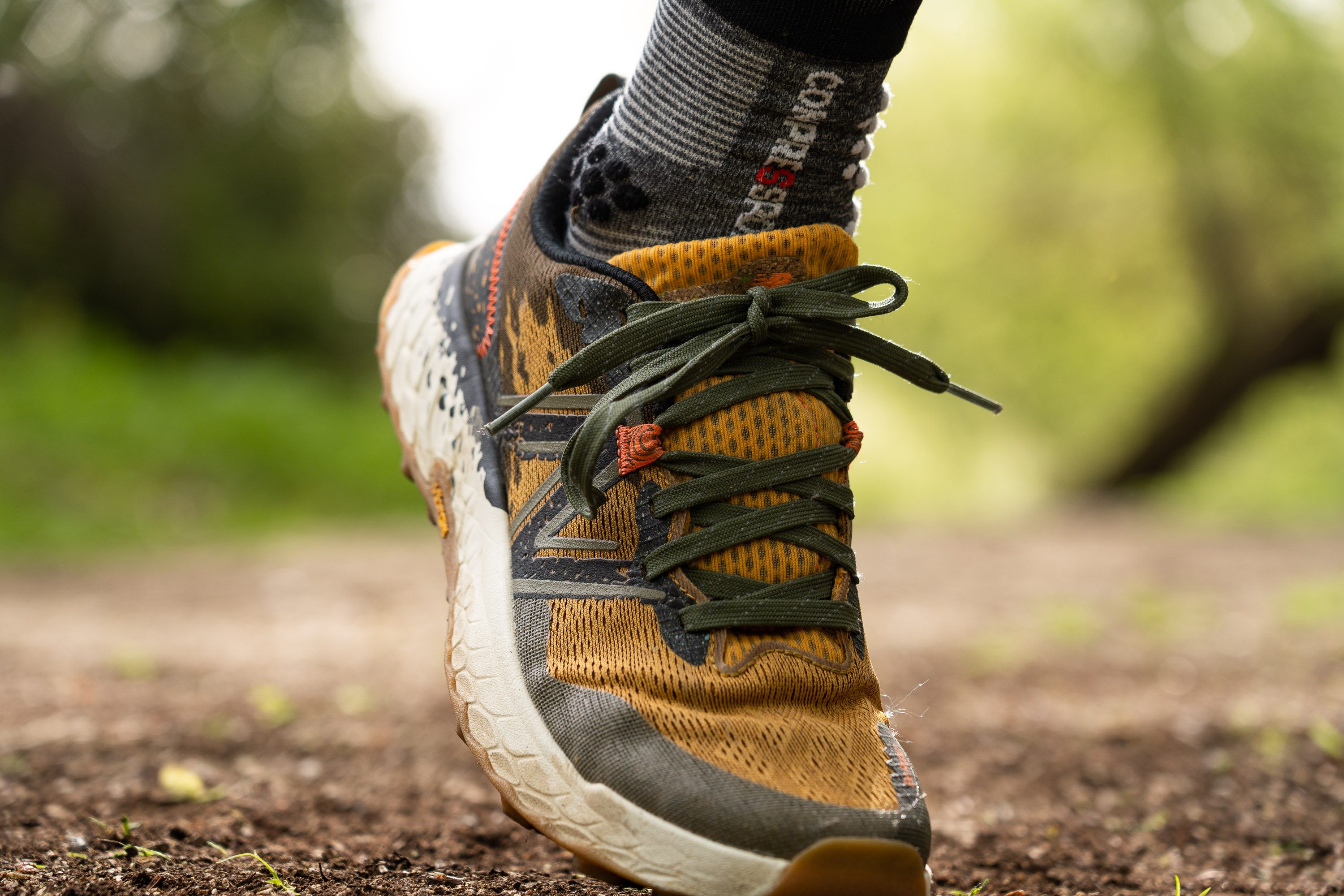
In addition to weighing less on the scale, this New Balance shoe also feels and looks much lighter.
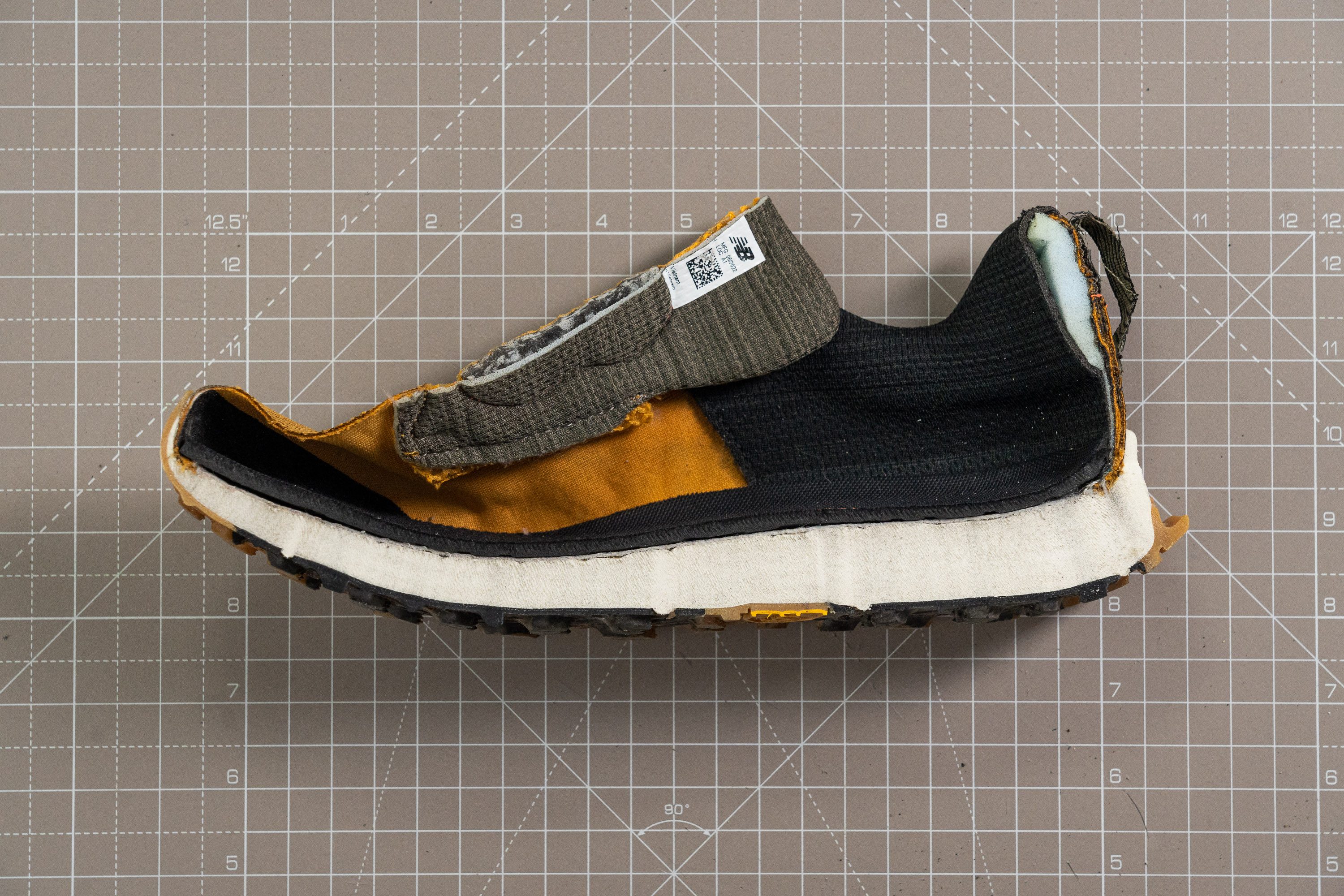
For reference, trail shoes on average weigh 297 grams/10.5 ounces, which happens to be exactly the same as this Hierro v7. But compared to the past iterations, it's the lightest by far.
A++ Gusseted tongue and a convenient pull tab
It's gusseted (attached to the sides), it prevents lace pressure, and it does a good job of holding the foot in place. This tongue has won us over!

Measuring the shoe's tongue padding with a caliper (6.3 mm), we found that it is a little thinner than its predecessor. And yet it sill has enough cushion for 99% of trail runners. Absolutely zero risk of lace bite!
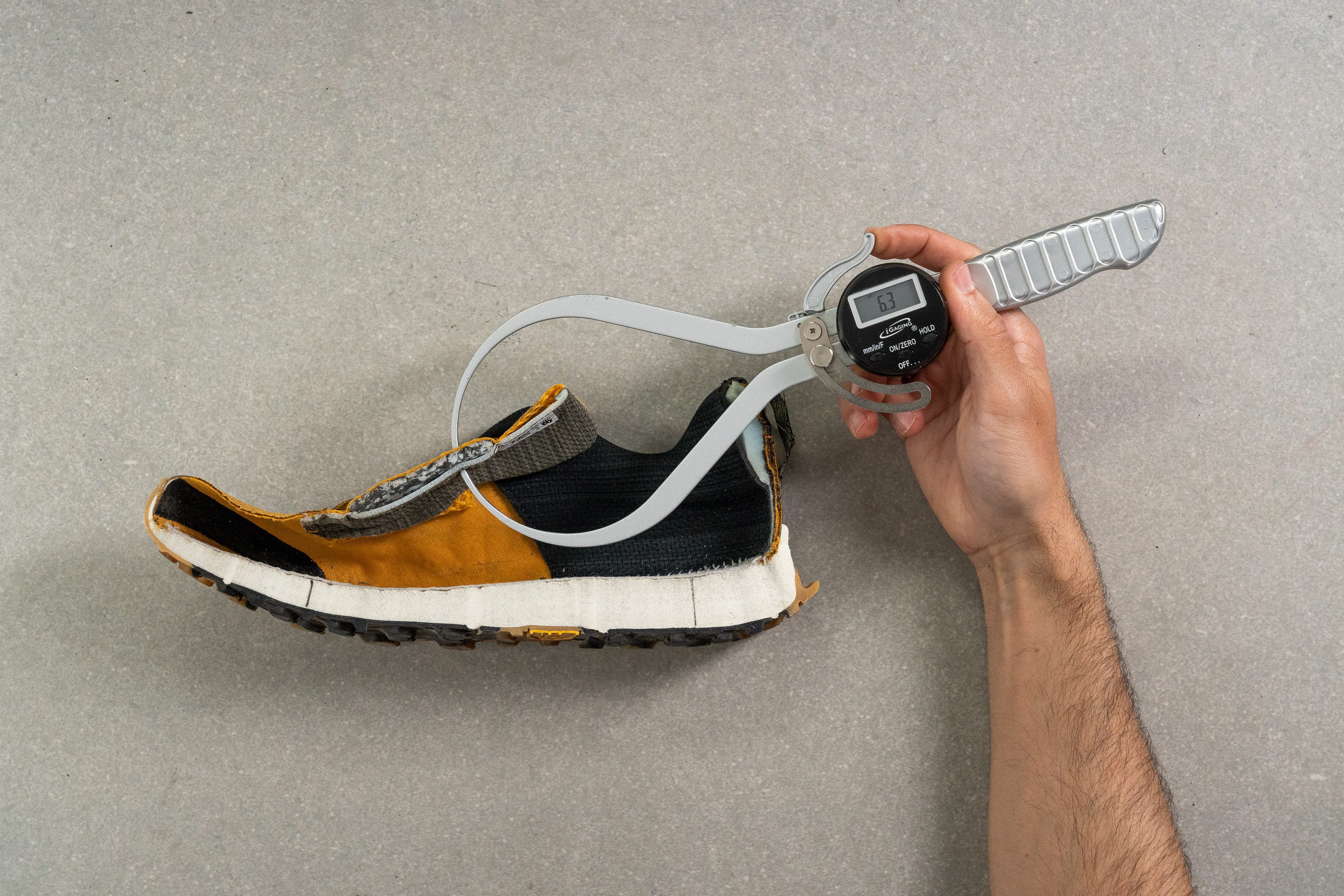
Having a thinner tongue in the new model is actually a positive thing. Excessive padding often leads to unnecessary weight, but in our humble opinion, New Balance has successfully trimmed down a few grams without compromising on comfort.
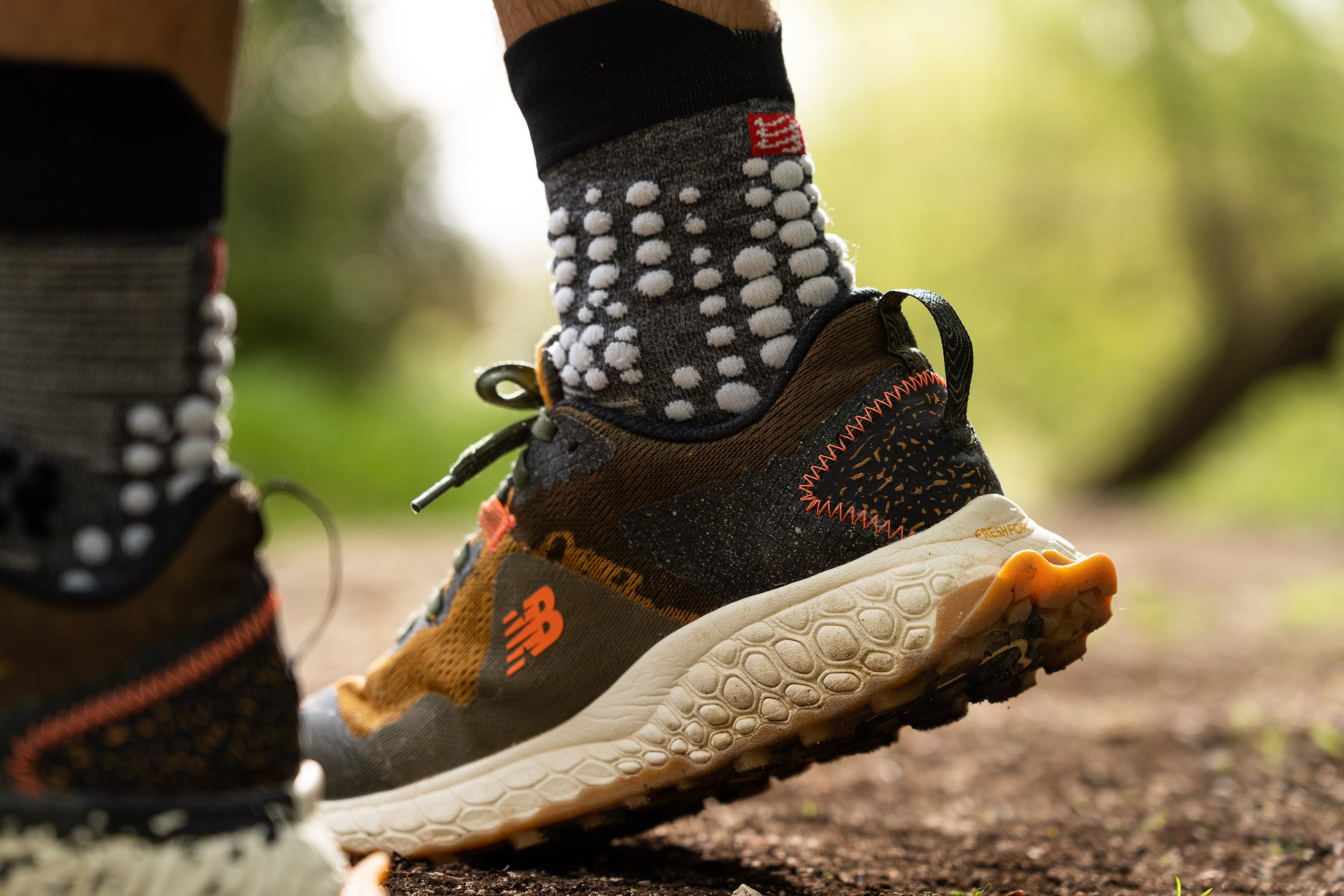
Finally, there's a handy pull tab that makes slipping into the shoe a breeze. And a little bit down there, you'll notice the classic Hierro rubber flap.

